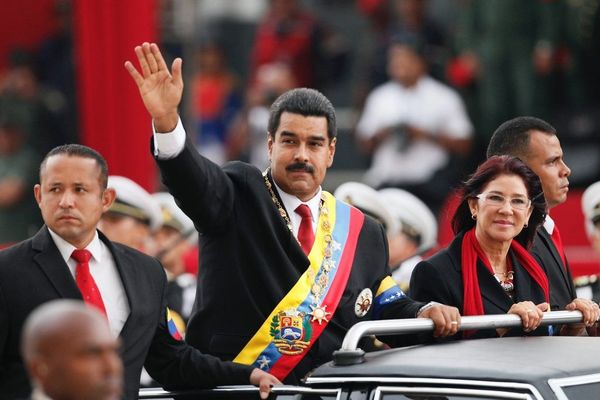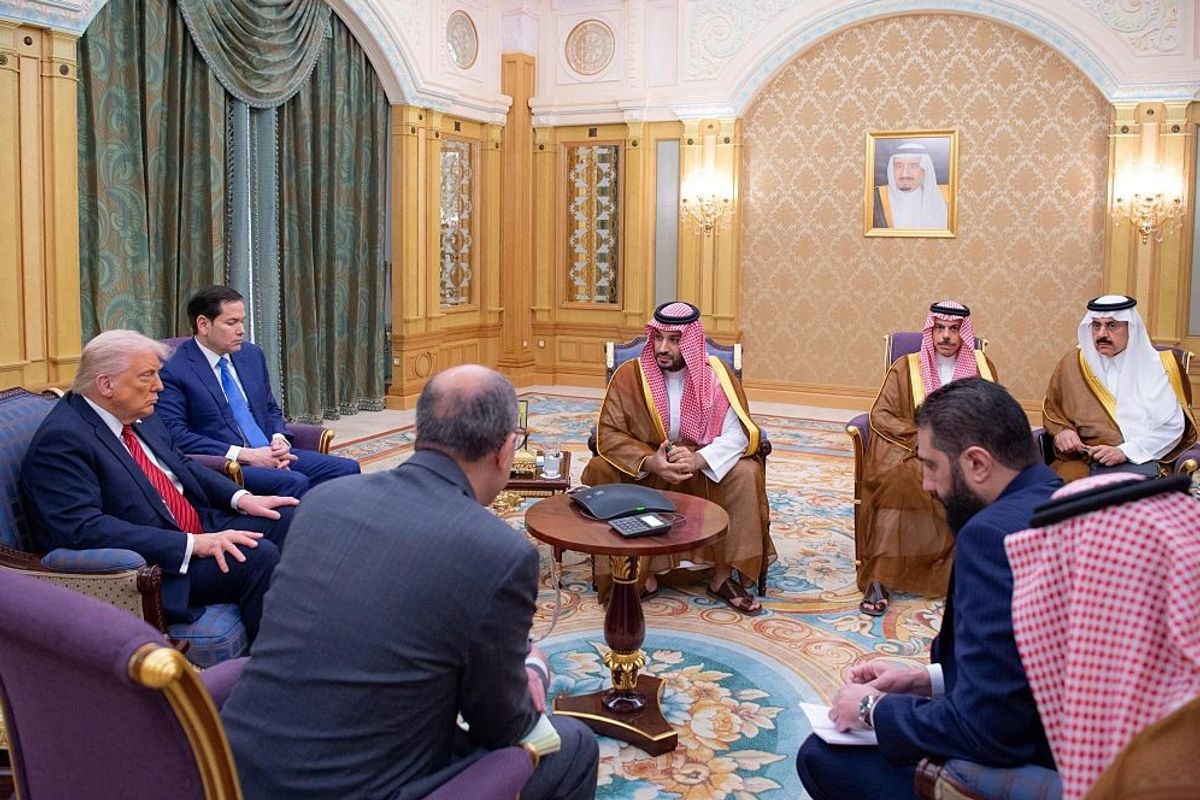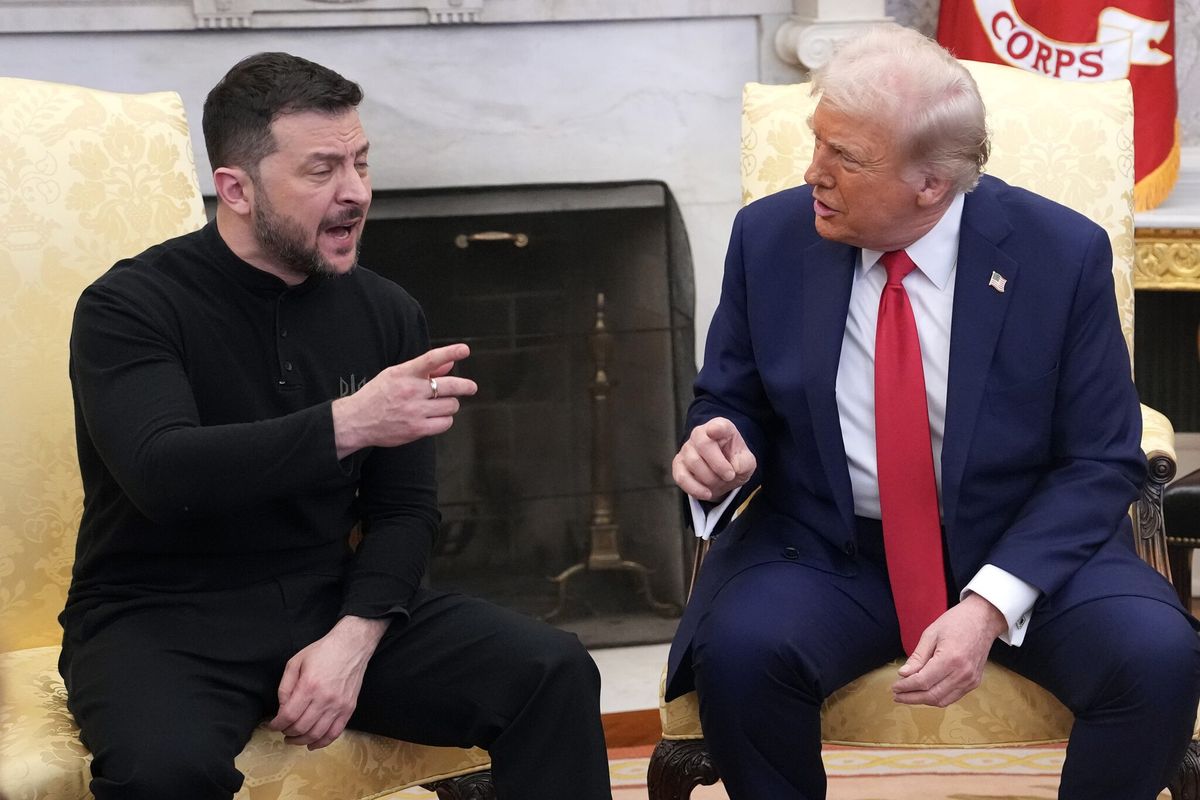A senior Kurdish official has dismissed the idea of creating a 20-mile wide safe zone in Syria presented by Turkish President Recep Tayyip Erdogan, something that Erdogan says would require both logistical and financial support from the U.S. and other allies.
The idea of creating the zone comes as the U.S. works out logistics of a troop withdrawal. Meanwhile, ISIS claimed responsibility for a suicide blast in the Syrian city of Manbij that reportedly killed a number of U.S. troops. It hasn't been independently verified whether or not ISIS' claim of responsibility is valid.
Cipher Brief Expert Brigadier General Mark Kimmitt (Ret.), who worked as the Assistant Secretary of State for Political-Military Affairs as well as the Deputy Assistant Secretary of Defense for Middle East Affairs, lays out the real-time issues that would be created by a safe zone.
President Donald Trump, once again, went to Twitter to announce a new initiative in the ongoing miasma within the US-controlled area of Northeast Syria. Less than 24 hours after threatening Turkey with economic measures if they “hit” YPG forces in northern Syria, Trump reversed the threat and spoke of economic opportunities between the two countries. Yet, in both tweets President Trump spoke of a 20-mile-wide safe zone to separate the YPG from Turkish forces, an initiative which may find a middle ground- on this one issue in the ongoing tension between Turkey and the United States over the status of the YPG.
Although details are yet to be worked out, long experience with humanitarian safe zones, deconfliction zones and zones of separation in conflict areas can highlight expected challenges. The record is mixed, with the 1992 Srebrenica massacre (inside of a UN “safe zone”) and Rwanda in 1994 as clear examples of failure, but the Zone of Separation established in Bosnia-Herzegovina in 1996 and no-fly zones in Operation Southern Watch in 1992 and Northern Watch in 1997, achieved relative success.
Of these examples, the Zone of Separation in the Former Yugoslavia comes closest to what can be expected in Northern Syria. Under the terms of the Dayton Peace Accords, the warring factions agreed to pull back from existing front lines, and US (and other) IFOR forces patrolled the neutral zone. Without going into detail, there were few incidents in the Zone of Separation and that may shape some of the talks between the US and Turkey – particularly as the current Turkish Minister of Defense Hulusi Akar, commanded the Turkish Brigade in Bosnia as part of US Multi-National Division (North).
Navigation and a road map
First, there needs to be agreement on which forces would be ejected and which forces would be allowed in the Safe Zone (SZ) upon initiation of an agreement. Will the YPG peacefully depart the SZ, likely proclaiming that remaining civilians would be slaughtered without their protection?
Will Turkish forces demand access to the SZ, viewing it as a protective buffer between Turkey and YPG forces? Would the southern boundary of the SZ serve as a demarcation line between Turkish Army units and YPG forces? Will the US take on patrolling responsibilities or will there be an outside force or organization to patrol the SZ? Expect as a minimum that Turkey will insist on joint patrols. Further, expect a full rejection of any Turkish joint patrols by the YPG. While the YPG are unlikely to agree to major concessions by the US and/or unwilling to honor a Turkish occupation, it can be expected that the US will be given the responsibility to “sell” the agreement to the YPG.
Next, what organization would arbitrate violations of SZ agreements? Would this be arranged among the parties to the agreement, or would this be done by outside actors such as the UN or the OSCE? While arbitration of violations is a straightforward requirement for a successful SZ, the time involved in achieving agreement on this issue may cause the responsibility to fall upon the main broker of this deal- the US.
Third, what would be the enforcement mechanisms for violations of the SZ? And, importantly, what would be the enforcement mechanisms available to forces within the SZ? Would they carry arms? How would the enforcers manage indirect fires originating from outside of the SZ? Would enforcers bring in combat weapon systems for the conduct of operations, or radars to locate suspected indirect fire violations? What would be the Rules of Engagement for individual soldiers and units? Of concern for the US would be (or should be) the lack of recent experience in such operations save in Kosovo and the Sinai, and the time required to “train up” units for deployment.
What (if any) neutral parties will be allowed inside the SZ, especially to perform non-military functions such as delivery of humanitarian aid, commercial enterprise, and governmental agencies. A vacuum of services would create separate problems, many of which could overwhelm existing infrastructure and agencies, especially as restricting access to safe zones is often used to intimidate and coerce residents of SZs.
The lure of quick solutions
Even with a general agreement among all parties, the number of challenges to a successful initiative are numerous. First would be, simply, the willingness of the Turks to give the YPG a seat at the table or a voice in the negotiations. As the Turkish government considers the YPG a terrorist organization, it maintains a policy (like the US) of non-negotiation. Given that policy, it is problematic to count on the YPG to agree or feel obligated to honor the outcome of US-Turkish talks as there are few reasons for the YPG to see major benefits to this initiative especially as this will end its aspirations for an independent Rojava (Western) Kurdistan. Syrian Kurdish officials have already panned the proposal as tantamount to “Turkish occupation” under the guise of a safe zone.
As such, violations of the agreement and conflict within and outside of the SZ, should be anticipated. Even with a durable agreement generally favorable to all sides, random violence is the norm. Should the agreement be weak or one-sided, the number of deliberate violations can be expected to be high.
A safe zone may separate the Turkish and YPG forces but unintentionally aggravate simmering (or suppressed) ethnic tensions within. The area is ethnically and religiously diverse, with Kurds, Arabs, Armenians, Muslims and a Christian minority numbering roughly 100,000 people. While it goes beyond the remit of this paper to examine the power relationships and balances currently within the area, withdrawal of YPG force for the SZ will inevitably alter the current status quo.
And consider that the reaction of players within the wider Syria conflict can’t be predicted beforehand. Will the Syrian government play a role in any agreement or, more dangerously, will they take provocative actions to obstruct or subvert the agreement? Will the Iranians or Russians see this as significantly delaying the withdrawal of American forces or as a justification for the US to stay longer? Will the US Congress see this effort or its implementation as exceeding the narrow Authority for the Use of Military Force permitting operations within Syria?
Not as easy as it looks but worth a try
No one should expect a viable agreement to emerge in the near term. Nor should anyone be fooled into thinking this initiative will resolve the host of disagreements between the US and Turkey in either Syria or on bilateral issues. Further, it is unlikely that this will ameliorate YPG concerns once a viable US force presence is gone from east of the Euphrates.
This does nothing to end the crisis over Pennsylvania-based Turkish cleric Fethullah Gulen, the widespread Turkish suspicion over US involvement in the 2016 coup, nor the status of YPG forces as allies of the US and a terrorist threat to Turkey. Nor, even if safe, will the YPG find satisfaction in a 20 mile Turkish-American safe zone in an area they consider central to an independent Kurdish federation in Syria. Yet, on the decision to withdraw US forces while protecting the YPG, the Safe Zone proposal may at a minimum, find the “golden mean” and better relations between Turkey and the United States.
Albeit to the dissatisfaction and potential obstruction by the YPG.
Read more from Brigadier General Mark Kimmitt (Ret.)...













